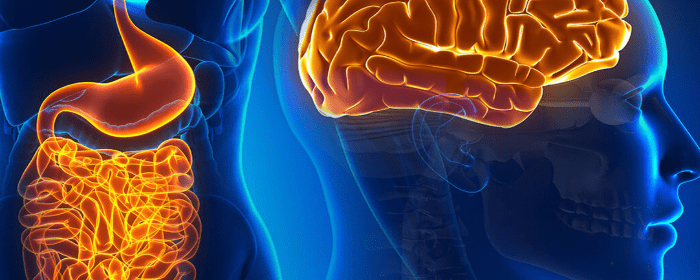
by admin | Mar 10, 2021 | Health Awareness
The physical benefits of exercise are proven and widely accepted: from weight management to reduced risk of several serious illnesses, it’s clear that exercise is one of the best preventive measures you can take for your health. In addition to your physical wellness, however, it turns out that exercise also has brain-boosting benefits.
The Brain on Exercise
When your heart rate rises during exercise, your blood flow increases, and the brain gets more nutrients and oxygen. Exercise also triggers the release of beneficial proteins, which nourish neurons and spur the growth of new brain cells. Thus, exercise has a direct impact on overall brain health.
In addition, exercise can also help you feel better mentally. Getting active prompts the brain to release feel-good chemicals, including dopamine and endorphins. These can help eliminate stress and may also aid in mood regulation.
Finally, exercise can optimize cognitive ability. Children and young adults who get regular exercise have been shown to score better in math and reading tests compared to those who don’t. Even working out just a couple of times a week appears to increase retention skills.
Moreover, being active can also help the body regulate sleep patterns, which can further support brain health. This creates a positive domino effect, as being well-rested may allow you to feel more focused, alert, and even creative during the day.
Ultimately, the importance of regular exercise on overall mental health cannot be overstated. The good news is that you don’t have to be an endurance athlete to enjoy the benefits, either. By simply getting moving—even if it’s walking, gardening, or doing household chores—you can promote better physical and mental wellness.
For more health awareness blogs, please visit http://www.stemedix.com/blog.

by admin | Mar 3, 2021 | Health Awareness, Ozone Therapy
Many exciting strides are being made in the field of regenerative medicine. With the goal of repairing healing tissue through regeneration, this branch of medicine uses various approaches to treat chronic illnesses, address injuries, and promote overall wellness. Here’s a look into some emerging treatment options.
Prolotherapy
Also known as proliferation therapy or regenerative injection therapy, prolotherapy is a complementary approach used to treat joint and muscle pain. It works by injecting an irritant to the affected area, such as a tendon or ligament, to spur connective tissue growth. The irritant is typically a sugar solution, which triggers the connective tissue to grow and promote healing. Study results have been mixed and research into the treatment is ongoing. For instance, people with osteoarthritis in the knee saw significant improvements after receiving prolotherapy injections, but studies have been small thus far.
Prolozone
Prolozone combines neural therapy, prolotherapy, and ozone therapy by injecting anti-inflammatory medications, ozone, vitamins and minerals, and other proliferative agents to promote healing. It’s believed the injected nutrients could bypass the body’s inflammatory response, thus enabling healing without added inflammation. Noticeable improvements have been reported by patients with osteoarthritis, though as with prolotherapy, most experts agree further research is needed to fully document the treatment’s effects. Other conditions that could respond well to prolozone may include rotator cuff injuries, sciatica, sports injuries, and chronic back pain, among others.
PRP
Platelet rich plasma (PRP) leverages the healing properties within a patient’s own blood, which is put through a centrifuge to isolate the plasma. PRP is concentrated and has growth factors that can help promote healing when re-injected into areas of tissue damage. This alternative option can help manage the symptoms of joint and musculoskeletal pain and can also be used in conjunction with stem cell therapy to drive optimal outcomes.
For more health awareness blogs, please visit http://www.stemedix.com/blog.

by admin | Feb 24, 2021 | Health Awareness, Functional Medicine
In the mid-2000s, neuroscientist Jane Foster noticed an interesting phenomenon in her laboratory: mice with health gut microorganisms were acting differently than those without. She believed the animals’ gut bacteria was influencing their behavior and mental state. Yet, it wouldn’t be for several years that a potential link between the gut and brain would be considered among the medical community.
Now, the gut-brain axis is widely discussed by neuroscientists. In recent years, thousands of publications have indicated many gut bacteria that have significant effects on the brain. Since then, researchers have been working avidly to determine whether, and how, microbes could play a role in conditions such as Parkinson’s disease (PD) and autism spectrum disorder, among others.
For instance, it’s believed that a specific strain of E. coli can produce a protein that may cause other proteins to misfold, resulting in errors that are ultimately transmitted to the brain in the case of Parkinson’s disease. In motor neuron disease, it’s suspected certain bacteria produces a vitamin B3 molecule that could travel to the brain and improve symptoms. With autism spectrum disorder, infections during pregnancy seem to be a catalyst. When certain bacteria trigger T-helper 17 cells, an immune system component, they produce immune molecules which travel to the fetus’s brain and appear to cause behaviors seen in autism.
In some cases, gut issues could be an important indicator of potential issues in brain health. For instance, many patients with PD experience symptoms such as constipation long before other characteristics of the disease. With that being said, the disorder presents differently in different individuals.
While there is still much to learn about the potential pathways microbes use to reach the brain, there’s considerable interest by the research community to further investigate potential links between brain and gut health. Researchers are currently exploring how certain bacteria could play a role in the treatment of conditions such as autism spectrum disorder and PD, among others. They’re particularly excited about the prospects since the gut microbiome can be modified, unlike genetics. While there is still considerable work to be done, ongoing efforts could make enormous strides for patients with brain disorders in the future.
Patients are discovering the benefits of having a comprehensive GI test done to determine their current gut health. These tests can be done at home and will determine the root cause of many gastrointestinal symptoms. By improving functional imbalances and inadequacies found, symptoms can improve. Learn more today!
For more health awareness blogs, please visit http://www.stemedix.com/blog.

by admin | Feb 17, 2021 | Health Awareness, Rheumatoid Arthritis
Arthritis is characterized by inflammation in the joints, which often causes pain, stiffness, and swelling. The levels of inflammation in your body are influenced by a number of factors, including diet. Some foods in particular have been shown to increase inflammation, thus exacerbating arthritis symptoms. To help control your arthritis, here are some foods to limit or avoid.
Fried Foods
The oil used for frying often contains omega-6 fatty acids, which have been linked to increased inflammation. Because they’re associated with a number of other health issues, including heart problems, they’re best avoided altogether.
Excess Salt
Salt is found in many different foods, but it’s important for people with arthritis to control their consumption. The mineral can increase the body’s inflammatory response, and it’s also been associated with an elevated risk of rheumatoid arthritis (RA). Flavor your food with joint-healthy seasonings, such as cumin, ground pepper, or garlic powder, instead.
Sugary Drinks
Added sugars have a broad range of health risks, ranging from their association with obesity and type 2 diabetes to elevated inflammation. Even low to moderate intake of sugary drinks such as sodas, juices, and sweet teas has been linked to heightened inflammation. If plain water seems too bland, considering adding a fresh wedge of lemon or cucumber slices to give it some flavor.
Alcohol
Moderate alcohol intake can reduce inflammation in certain types of arthritis. For instance, the antioxidants in red wine help to promote joint health in RA with a daily five-ounce serving. Yet, alcohol can also trigger symptoms in other types of arthritis, including gout. If you’re unsure about how drinking could affect your arthritis, it’s best to talk to your rheumatologist.
Red Meat
Red meat is notoriously high in saturated fat, which has been linked to inflammation that leads to joint swelling. Other types of protein, including plant-based sources and poultry, are lower in saturated fats, and thus better for joint health.
High-Fat Dairy Products
Like red meat, full-fat dairy products, including cheese, yogurt, and milk, have high levels of fat. They also typically contain more added sugars than low-fat varieties. Some people with arthritis eliminate dairy from their diets altogether to reduce its inflammatory effects, while others enjoy low-fat options. Low-fat yogurt, in particular, may be worth keeping in your diet, as it contains probiotics which can actually help control inflammation.
Heavily Processed Foods
Heavily processed foods such as refined carbohydrates, candy, lunch meat, and baked goods often have additives that contribute to inflammation. Many are loaded with added sugars or excess salt, and can therefore aggravate arthritis symptoms. Whenever possible, choosing primarily whole foods such as fruit, vegetables, healthy fats, and lean protein, will be best for controlling inflammation and arthritis symptoms.
For more health awareness blogs, please visit www.stemedix.com/blog.

by admin | Feb 10, 2021 | Health Awareness, Functional Medicine
Heavy metals are found naturally in the earth and used widely across many industries. The body also naturally contains certain heavy metals, such as iron, zinc, and copper, which help to promote optimal functioning. When your soft tissues absorb a heavy metal in excess, it leads to a condition known as heavy metal poisoning.
The most common heavy metals that cause toxicity when absorbed by the body include:
- lead
- mercury
- arsenic
- cadmium
Sources of exposure for these metals could include medicine, pollution, food, lead-based paint, and working in industrial settings.
Heavy metal poisoning is considered rare in the U.S., but it can still occur. The condition develops when someone is exposed to high levels of metal over a prolonged period of time.
Symptoms
Symptoms of heavy metal poisoning can include nausea, diarrhea, vomiting, shortness of breath, and tingling in the extremities. Weakness and chills may also occur.
There are also symptoms specific to each type of metal. For example, mercury poisoning may cause poor coordination, difficulty walking, nerve damage in the hands and face, and muscle weakness. Lead poisoning is characterized by sleep problems, aggression, constipation, irritability, anemia, headaches, and memory loss. In arsenic poisoning, red or swollen skin may develop, along with muscle cramps, irregular heartbeat, and lesions on the skin. Finally, cadmium poisoning is marked by difficulty breathing, fever, and muscle pain.
Causes
Each specific metal type has unique circumstances leading to exposure as well. For instance, lead poisoning can occur after living in a home with lead paint, working at a firing range, using kohl cosmetics, or working in certain types of industrial construction. A person could be exposed to mercury in an environment that manufacturers mirrors, x-ray machines, or other products containing mercury. Eating contaminated fish can also lead to mercury poisoning, as can mining activities. Industrial work and cigarette smoke can lead to cadmium poisoning. Arsenic poisoning may occur after ingesting certain chemicals, such as insecticides, or living in an area with high levels of arsenic in the natural environment.
Diagnosis
Heavy metal poisoning can be diagnosed through a blood test known as a heavy metals panel. If you have symptoms of poisoning present but only low levels of heavy metal are detected, further testing may be performed. For instance, medical professionals could use hair, fingernail, or urine analysis, as well as X-rays and function studies of the kidney and liver.
You can also do a home comprehensive test to determine toxin and detoxification markers. The tests also include deficiencies and insufficiencies to help address the root cause of symptoms you may be experiencing. Learn more.
Treatment
Eliminating exposure to heavy metal is the first step in treating the condition. In mild cases, this may be sufficient for alleviating symptoms.
There are detoxification products available to also help address. There are 10 and 28-day programs to help facilitate the removal of undesirable compounds in the body.
In more severe cases, chelation therapy may be prescribed. In this treatment, the patient takes medication to bind the heavy metals in your body, which will then exit the body as waste. Chelation therapy may encompass oral pills or intravenous therapy.
For more health awareness blogs, please visit www.stemedix.com/blog






 St. Petersburg, Florida
St. Petersburg, Florida
